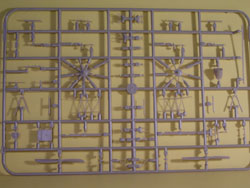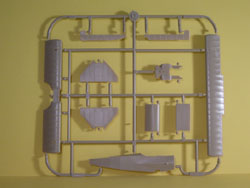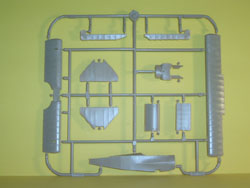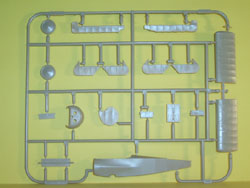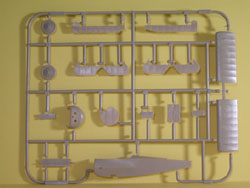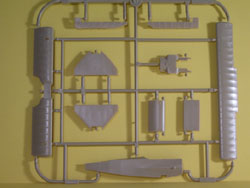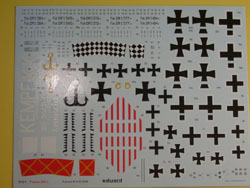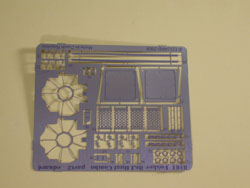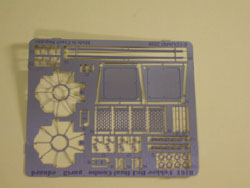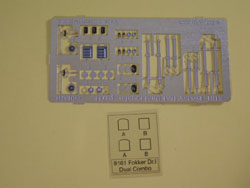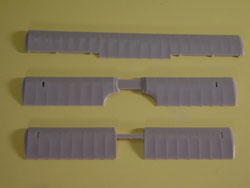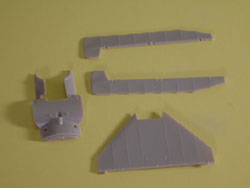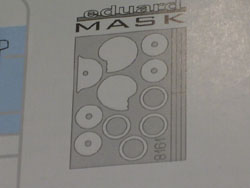Eduard 1/48 Fokker Dr.I
Dual Combo
|
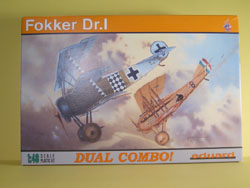 |
History
The Fokker Dr.I is well documented to a point beyond its actual historical
contribution due to its use by Manfred von Richthofen and his elite JG1
pilots. In spite of its slow speed and structural weaknesses, the Dr.I
was a solid performer for about 8 months, October 1917 to May/June of
1918. There are any number of good references regarding this aircraft
both in book form and on line, so for further info you will not need to
look far.
The Kit:
This is the third release involving this New Tool Dr.I. The preceeding
two were both expensive boxings with a Manfred von Richthofen theme, including
many extras. Matt Bittner did a first look review of one of these packagings
in the June IM and
I would have difficulty in improving on Matts comments reference the basics
of the kit Eduard has offered. I will therefore focus on what you get
that differs from the previous releases.
First and foremost there are of course, two complete Dr.Is offered in
the box. All of the injection parts offered in the previous release are
there for both kits including the early ailerons and curved horizontal
tail plane. One small error is the location of the Spar inspection panel
on the upper wing. Quite simply it does not line up where the spar is
located. This is represented as raised detail on the kit and can be removed
easily, but replacing this in the correct position could prove more difficult.
Pre painted photo etched parts are included for both aircraft. These parts
include the usual instruments, seat belts, engine detail parts, machine
gun cooling jackets, and exterior details. A few extra instruments are
included for those who ,like me ,seem to have to sacrifice at least one
to the carpet gnomes. Masks are included for the wheels, the Jasta 2 outlined
rudder, and for the Jasta 2 cowl face, for both aircraft. The assembly
sequence is fairly straight forward and is typical of this aircraft type.
Decals and Painting
Decals are included for six aircraft and it is here that one has to
be careful and use references. First one should note that although the
box side panel shows a Jasta 19 Dr.I, this is not one of the marking options
included in the decals or profiles. For some unknown reason Eduard seems
to have substituted Hans Weiss' Jasta 11 bird to replace the Jasta 19
scheme. Schemes offered are as follows:
-
Ltn. Hermann Frommherz Jasta 2. A note of caution here as to the
color scheme. The box side drawings show the half white tail to be
on the Port side, while the drawings in the insrtuction booklet are
reversed. The box side art is correct for this scheme.
-
Ltn. Werner Steinhauser Jasta 11. This scheme also has to be studied
using references as the serial number provided, 564/17, does not match
the markings. Steinhauser utilized at least two Dr.Is with Jasta 11.
The first is marked as per the kit with the “Possible”
exception of the Horizontal Tailplane. The most significant difference
is that Eduard shows the use of the late aileron style, part numbers
A7 & A9. The early aircraft with the red band and yellow X clearly
has Early style ailerons. The tail markings can be used As supplied
as the only known photo does not show this area. Other options for
this aircraft would be No tail markings, or reverse the pattern and
use a red base with yellow stripes.
The second Dr.I flown by Steinhauser was indeed 564/17. This aircraft
was photographed with a yellow band and red X,. The tail plane was
colored as seen in the kit markings. This aircraft did have the late
ailerons . The national insignia were of the Balken Cross style.
-
Ltn. Hans Weiss Jasta 11 Dr.I 545/17. This aircraft seems to be
correct as depicted
-
Ltn. Freidrich Kempf Jasta 2, Dr.I 213/17: The only change needed
that I know of is that the rear fuselage should be halved in black
and white on the sides .
-
Ltn. Rudolph Klimke Jasta 27, Dr.I 577/17: To the best of my knowledge
this one is correct as depicted.
-
Hptm. Adolph von Tutschek Jasta 12 , Dr.I 404/17.
Streaked Finish
The drawings Eduard offers as placement guides for the markings are
quite interesting. Eduard seems to be indicating that colors were involved
other than Olive Green over CDL. Some recent articles published by Dave
Roberts in Cross and Cockade, and his look at Fokker Streaking in Albatros
Productions Fokker D.VII Anthology Vol. 1, are certainly thought provoking,
and seem to match Eduards interpretation. Most of the former beliefs on
this finish are based on examinations of a very small piece of existing
fabric. The jury is still out but there are plenty of threads to research
this subject on the Aerodrome Forum. Still one can not be proven wrong
if you go with CDL as a base with olive green/green brown streaks, or
use the supplied drawings and have fun!
Overall this kit looks like a winner. Those who wish to build two out
of the box will find all of the detail one needs. For the super detailer,
the basis is there. The kit compares well with Drawings from Windsock
Data Files and other publications. Best of all at about $36.00 retail
this kit is a bargain, working out to $18.00 per kit! Highly
Recommended!
Thanks to Eduard and Matt Bittner for the Review sample
|
|

